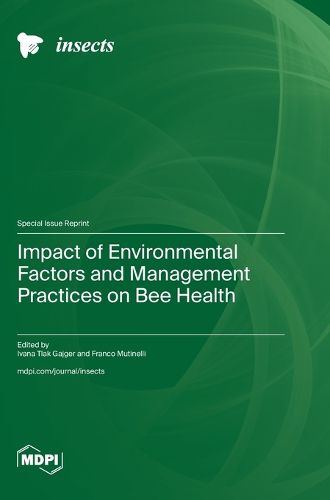Readings Newsletter
Become a Readings Member to make your shopping experience even easier.
Sign in or sign up for free!
You’re not far away from qualifying for FREE standard shipping within Australia
You’ve qualified for FREE standard shipping within Australia
The cart is loading…






This title is printed to order. This book may have been self-published. If so, we cannot guarantee the quality of the content. In the main most books will have gone through the editing process however some may not. We therefore suggest that you be aware of this before ordering this book. If in doubt check either the author or publisher’s details as we are unable to accept any returns unless they are faulty. Please contact us if you have any questions.
This compilation of twenty-three original articles and a communication underscores the urgency of using interdisciplinary approaches to safeguard bee health and ecosystem sustainability. The published articles explore complex factors affecting health, emphasizing the global honeybee and pollinator populations crisis. Key insights include Stressors on Bee Populations (pathogens, pests (e.g., V. destructor), pesticides, habitat loss, and climate change); Control Measures (studies highlighting effective methods such as queen caging and oxalic acid treatments for Varroosis control, essential oils as alternatives to synthetic acaricides, and advancements in diagnostic tools such as qPCR assays for diseases such as American foulbrood); the Impact of Environmental and Agricultural Practices (urbanization, pesticide exposure, and agricultural intensification affect bees differently, e.g., urban areas showed a higher pathogen prevalence, while rural areas had more pesticide-related impacts); Chemical and Biological Research (research identified effective natural remedies, such as Agaricus bisporus extract, and studied pesticide residues' effects on honey and beeswax); Behavioral and Genetic Studies (studies on disease transmission behaviors, genetic responses to stressors, and the influence of food diversity reveal how bees adapt to environmental challenges and human activities); and Global and Local Initiatives (efforts such as citizen science for monitoring wild bees, the development of biosecurity measures, and comparative studies on bee species in diverse habitats aim to mitigate risks and improve resilience).
$9.00 standard shipping within Australia
FREE standard shipping within Australia for orders over $100.00
Express & International shipping calculated at checkout
This title is printed to order. This book may have been self-published. If so, we cannot guarantee the quality of the content. In the main most books will have gone through the editing process however some may not. We therefore suggest that you be aware of this before ordering this book. If in doubt check either the author or publisher’s details as we are unable to accept any returns unless they are faulty. Please contact us if you have any questions.
This compilation of twenty-three original articles and a communication underscores the urgency of using interdisciplinary approaches to safeguard bee health and ecosystem sustainability. The published articles explore complex factors affecting health, emphasizing the global honeybee and pollinator populations crisis. Key insights include Stressors on Bee Populations (pathogens, pests (e.g., V. destructor), pesticides, habitat loss, and climate change); Control Measures (studies highlighting effective methods such as queen caging and oxalic acid treatments for Varroosis control, essential oils as alternatives to synthetic acaricides, and advancements in diagnostic tools such as qPCR assays for diseases such as American foulbrood); the Impact of Environmental and Agricultural Practices (urbanization, pesticide exposure, and agricultural intensification affect bees differently, e.g., urban areas showed a higher pathogen prevalence, while rural areas had more pesticide-related impacts); Chemical and Biological Research (research identified effective natural remedies, such as Agaricus bisporus extract, and studied pesticide residues' effects on honey and beeswax); Behavioral and Genetic Studies (studies on disease transmission behaviors, genetic responses to stressors, and the influence of food diversity reveal how bees adapt to environmental challenges and human activities); and Global and Local Initiatives (efforts such as citizen science for monitoring wild bees, the development of biosecurity measures, and comparative studies on bee species in diverse habitats aim to mitigate risks and improve resilience).